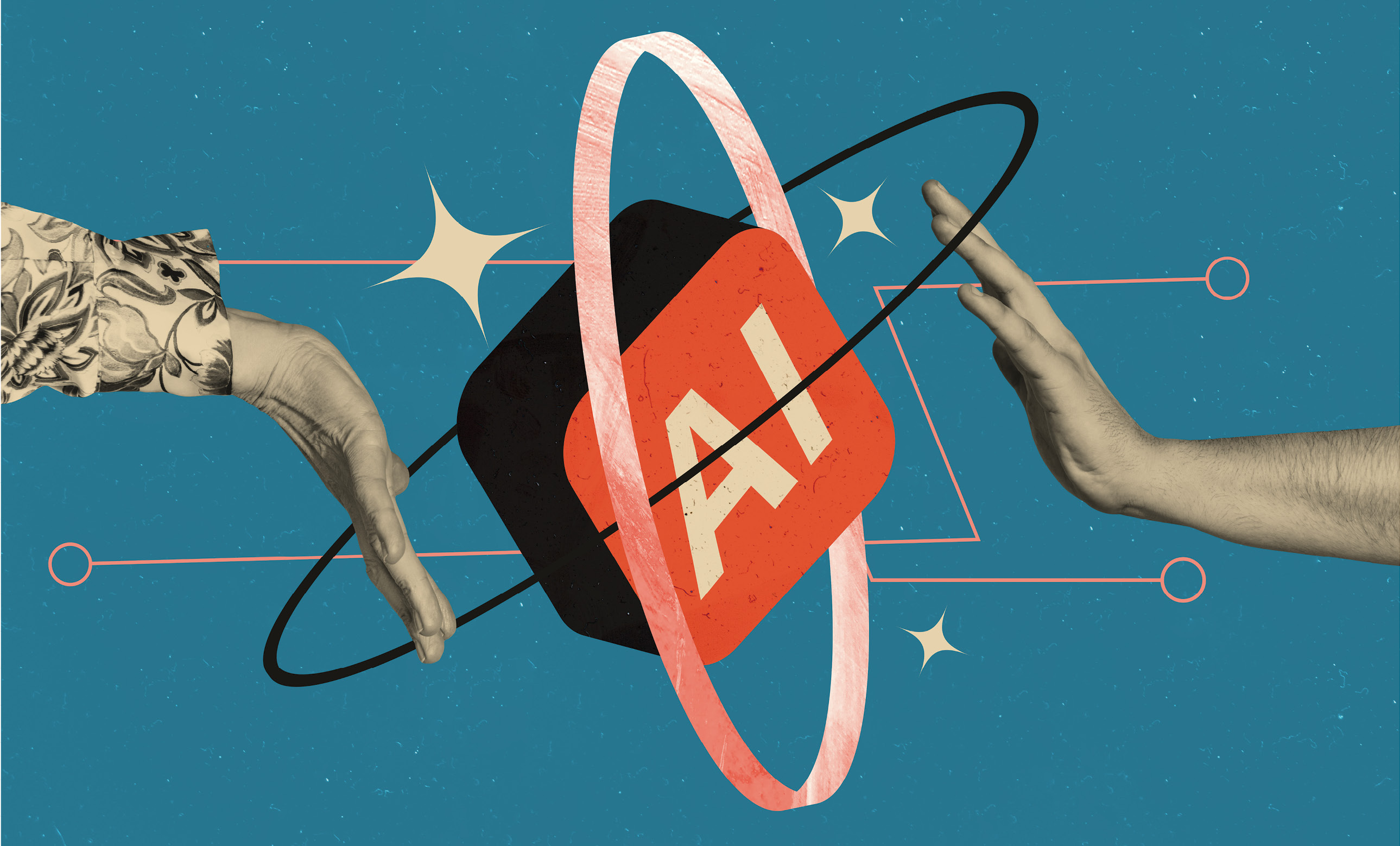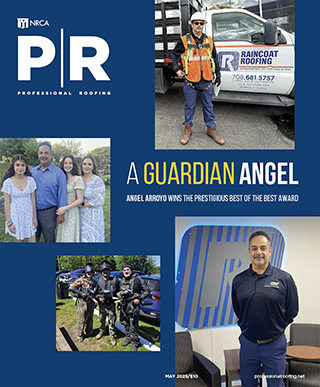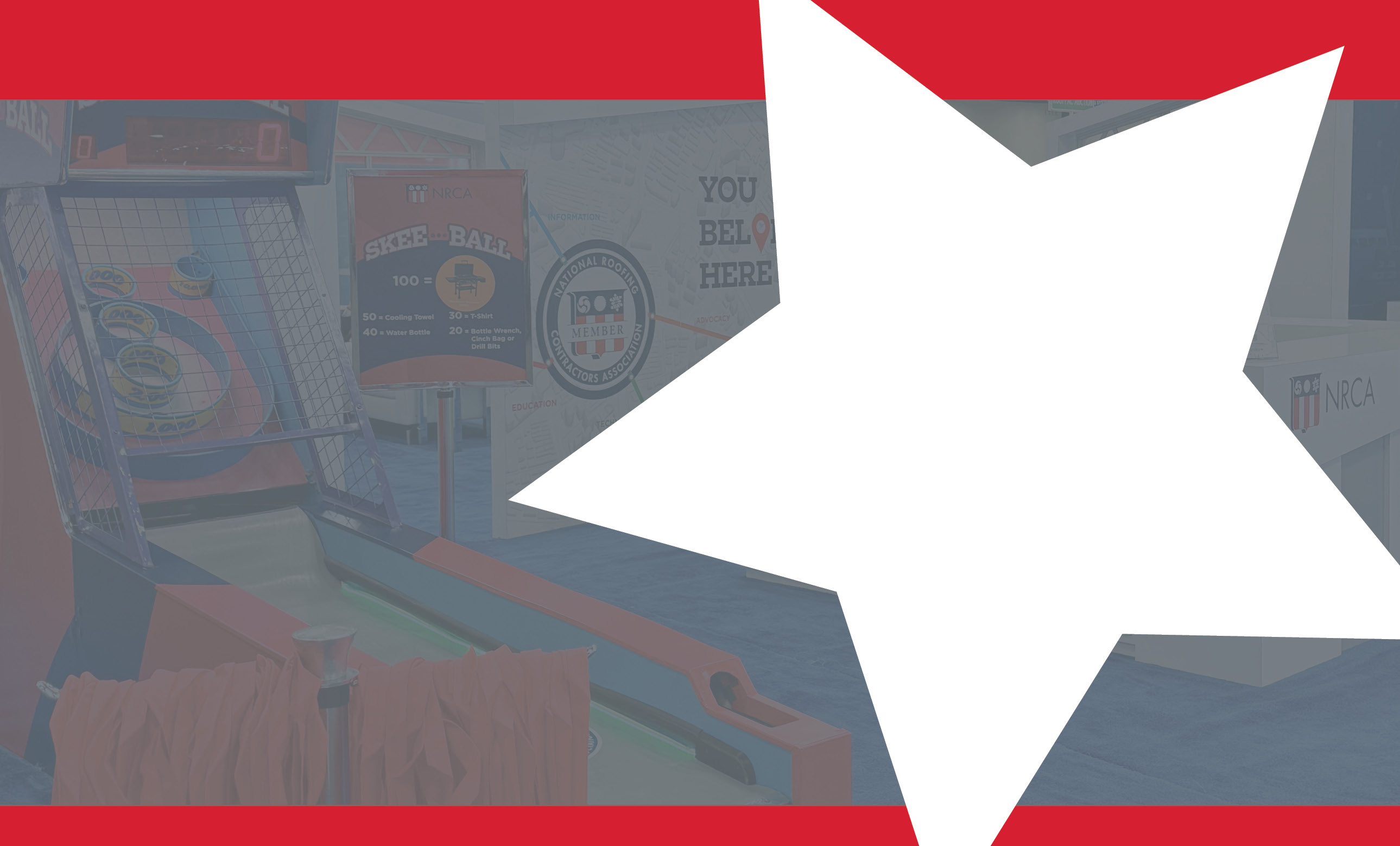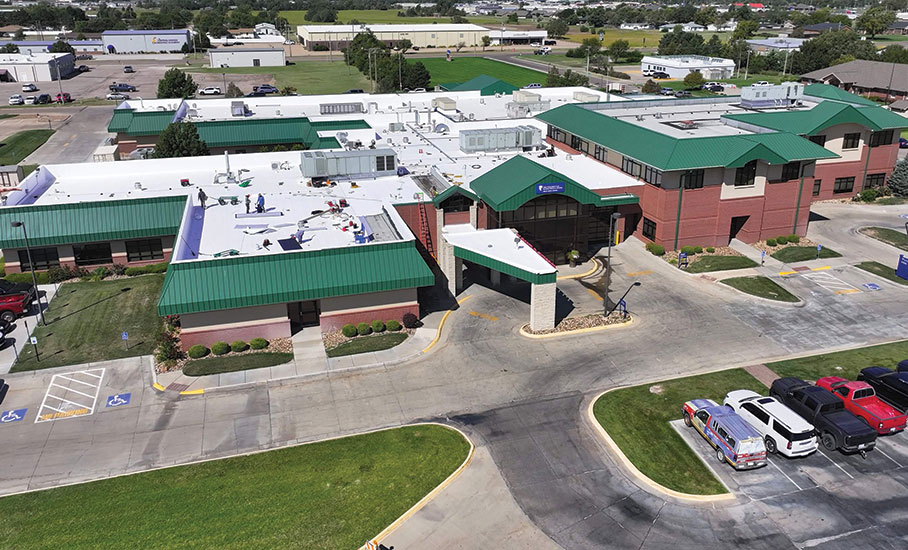
Artificial intelligence is transforming industries, and roofing is no exception. During the past two years, generative AI and large language models have emerged as some of the most talked about technologies in the construction industry. Although many contractors have taken a cautious, wait-and-see approach, a major shift in how roofing businesses operate is on the horizon.
AI is reshaping the way roofing contractors manage business operations across the entire value chain. From revolutionizing back-office operations with cutting-edge tools to maintaining traditional, hands-on methods that have defined the roofing trade for generations, AI will in some way affect the way you conduct daily business.
The digital transformation
Although many roofing companies are actively using AI, adoption rates vary dramatically among internal departments. Generative AI can create original content such as text, images, videos, audio or software code and deliver deep insights into market trends, customer behavior and operational efficiencies. As a result, marketing and sales teams are experiencing what many describe as a “magical” transformation thanks to rapid advancements and large language models.
In contrast, field operations remain deeply rooted in manual labor. Although some hands-on functions are being transformed by AI innovations, physical work on the roof requires traditional methods. This dichotomy creates a fascinating—and sometimes challenging—adoption divide.
Mike Kornahrens, vice president at Advanced Roofing Inc., Fort Lauderdale, Fla., remarked AI could affect everything from sales and marketing to field operations and post-project analysis.
“AI has the potential to impact every part of our business—from sales and estimating to field operations and maintenance,” Kornahrens says. “The advancements in just the past few years are astonishing and helping us work smarter and more efficiently.”
Porter’s five forces
Porter’s five forces is a strategic framework developed by Michael E. Porter, a professor at Harvard Business School, Boston, to analyze the external forces that shape the competitiveness and profitability of an industry. Companies use this model to understand market dynamics and develop strategies that strengthen their positions.
For roofing contractors, understanding these forces— especially in the context of emerging technologies such as AI—can help evaluate risks and opportunities in a rapidly changing landscape.
Threat of new entrants: AI-driven tools are lowering traditional barriers to entry by automating tasks such as content generation, estimating, scheduling and customer engagement. These efficiencies allow new players to enter the market more quickly. However, the technical complexity and hands-on expertise required on job sites still favor established contractors with strong reputations and skilled labor.
Bargaining power of suppliers: AI-powered enterprise resource planning and analytics platforms allow contractors to better manage procurement, track material costs and forecast demand. By improving visibility into pricing and availability, contractors can reduce reliance on suppliers and negotiate more favorable terms, decreasing supplier power.
Bargaining power of buyers: With access to online reviews, real-time project updates and AI-enhanced quoting tools, buyers are more informed and demanding than ever. This transparency increases expectations for quality, speed and communication— shifting power toward customers and raising the bar for contractors to be hyper transparent.
Threat of substitutes: Although robotics, drones and automated inspection technologies are making strides, most roofing tasks still require skilled human labor, especially for custom and complex projects. As such, the threat of substitutes remains relatively low in the short term though it may rise as technologies mature.
Competitive rivalry: As more contractors integrate AI into their operations—from marketing and estimating to project tracking and customer support—the competition intensifies. Early adopters gain operational efficiency and improved customer experience. Contractors who delay adoption risk falling behind even if their field work remains strong.
AI tools for every function
Sooner or later, AI is coming to your roofing company. What follows explains how AI is transforming each segment of the roofing business and specific AI tools you can implement now.
Accounting and finance
Financial planning: Tools such as QuickBooks Online, Sage Intacct and Xero automate bookkeeping, tax preparation and forecasting.
Advanced analytics: Botkeepr, Datarais and Microsoft Dynamics 365 Finance offer AI-driven insights and interactive financial visualizations, turning complex spreadsheets into actionable dashboards.
Takeaways: AI streamlines financial processes, improves accuracy and provides critical data to guide long-term growth strategies.
Communication
Content and communication: Advanced language models such as ChatGPT, Google Gemini, Grok and Play.ht drive everything from content generation to natural language interfaces.
Takeaways: These models underpin many digital tools, enabling seamless communication and automating content creation, which drives efficiency across the board.
Estimating and inspections
Accurate estimating: Tools such as DocumentCrunch, Estimating Edge, Roof Orders and Xactimate AI Powered Estimates produce precise cost estimates, essential for competitive bidding.
Advanced inspections: Drone and aerial technol-ogies with AI integrations such as DroneDeploy and EagleView® enable remote inspections. Future potential in video analysis via Claude.ai and Google Gemini could further enhance accuracy.
Takeaways: These solutions ensure competitive bids and streamline inspections with high precision and efficiency.
Human resources and training
Talent acquisition: AI recruitment platforms enhance job postings and initial candidate screenings. However, many candidates now submit perfect AI-generated resumes that require human review to capture subtle nuances.
Training development: At Johns Manville Roofing Systems, Denver, Jess Murphy, preferred accounts manager for Johns Manville Roofing Systems, leverages ChatGPT to create custom CEU presentations tailored for contractors, architects and engineers. These dynamic presentations refresh outdated materials quickly and effectively.
Employee management: Platforms such as BambooHR, Cornerstone OnDemand and Workday streamline onboarding and performance tracking.
Takeaways: AI modernizes human resources functions and training while ensuring human oversight preserves quality and individuality.
IT and coding tools
Custom software development: Tools like AWS CodeWhisperer, Bolt.new, GitHub Copilot and Replit boost developer productivity by providing real-time code suggestions and debugging support.
Takeaways: These tools streamline IT operations and facilitate custom integrations, ensuring your technological backbone remains robust.
Leadership and strategic management
Vision and strategy: AI tools such as ChatGPT, Fyxer.ai and Google Gemini generate comprehensive business plans, summarize lengthy meetings and automate routine emails.
Decision support: Microsoft Copilot, Notion AI and other similar platforms help create detailed presentations and strategic roadmaps that allow leaders to visualize complex data.
Workflow automation: Zapier integrates various apps and data sources, enabling fast, data-driven decision-making.
Takeaways: AI empowers leadership to automate and make rapid, informed decisions while leaving the final strategic calls in the hands of experienced professionals.
Legal, permitting and warranties
Contract and document management: AI tools such as AI Lawyer, ContractPodAi, Legly.io and Robin AI™ streamline legal processes from contract generation and permit applications to warranty administration.
Takeaways: AI enhances legal workflows but must always be overseen by human experts to avoid costly errors.
Logistics and vehicle management
Material sourcing and inventory: Integrated ERP systems like Microsoft Dynamics and platforms such as X.Build optimize supply chain data, inventory management and vehicle fleet operations.
Takeaways: AI-driven systems reduce delays, optimize resource allocation, and ensure materials and vehicles are managed efficiently.
Operations and field execution
Project coordination: Platforms such as Asana, Monday.com, Trello and Smartsheet optimize scheduling, resource allocation and overall worklflow management. Notion AI enhances knowledge management and collaboration while Fathom provides AI-powered meeting transcription and insights. ServiceTitan® is a field service management platform.
Field management: Buildertrend, CoConstruct™ PlanGrid, Procore, X.Build and other similar platforms drive efficient on-site execution.
Real-time inspections: Tools such as CompanyCam, DroneDeploy, Hover, Matterport® and Roof Hawk capture real-time field data to ensure quality and speed.
Takeaways: AI facilitates efficient field execution and real-time monitoring while experienced professionals make final quality assessments.
Safety and compliance
Risk management: AI-powered camera tracking and video analytics tools like EarthCam.net,® iQ4Mobility and TrueLook intelligent security help monitor job-site safety and enforce compliance.
Takeaways: These systems improve overall site safety, reduce the risk of accidents and ensure adherence to Occupational Safety and Health Administration standards.
Sales and marketing
Content generation: Tools such as ChatGPT, Google Gemini and Microsoft Copilot produce high-quality emails, presentations and social media content.
Digital presence: Platforms like Canva, Jasper.ai, MidJourney Graphics, Play.ht and Wix enhance visuals and website design.
CRM integration: Systems such as Acculynx, Hubspot, JobNimbus, Microsoft Dynamics and Salesforce streamline lead management and customer engagement.
Takeaways: AI strengthens customer engagement and automates marketing efforts, driving robust sales performance and brand visibility.
Security and cameras
On-site security: AI-powered security tools like EarthCam.net, iQ4Mobility and TrueLook Intelligent Security provide 24/7 real-time monitoring and advanced analytics, ensuring job-site safety and security are maintained at all times.
Takeaways: Enhanced security systems offer peace of mind and contribute significantly to overall site safety.
Service and maintenance
Post-project inspections: Procore Field Productivity captures real-time data to support routine inspections and prompt maintenance, ensuring roof systems remain in optimal condition.
Takeaways: Regular monitoring through AI-powered tools can enhance customer satisfaction, protect contractors against theft and help prolong roof system lifespans.
Integration
The roofing industry is standing at the crossroads of tradition and technology; consider taking these steps to integrate AI into your team’s workflow:
Start in the back office: Integrate AI tools like ChatGPT, Fathom.ai, Fyxer.ai, Google Gemini and Microsoft Copilot to automate administrative tasks. Track performance metrics using advanced visualization tools.
Invest in training: Educate your team about AI’s benefits and limitations. Consider training programs from organizations like VJAL Institute to stay current with the latest innovations.
Form an AI focus group: Create an interdepartmental task force to analyze AI technologies and develop tailored standard operating procedures.
Prioritize data management: Ensure your data is of high quality and well-managed; effective AI relies on reliable data inputs.
Embrace GEO tactics: Strengthen your digital presence by combining traditional local search engine optimization with generative engine optimization tactics. Create expert-level thought leadership articles focused on optimizing question-based keywords and regularly update your content to stay relevant in an AI-driven search landscape.
Augment; don’t replace: Use AI to handle repetitive tasks and aid in creativity, but keep critical decisions in human hands. Protect your business with Errors and Omissions Insurance if you rely on AI for generating crucial documents. This coverage could be essential if AI-generated documents result in costly mistakes or legal disputes.
Enhance cybersecurity: Collaborate with IT and security teams to safeguard your data as you integrate new AI systems.
Master prompt engineering: Develop effective prompts for searches to maximize the output of your AI tools. Create a spreadsheet of prompts you like best, ensuring you extract the most valuable insights.
Monitor industry trends: Stay informed through resources such as NRCA, local roofing contractor associations and YouTube. Use tools such as ChatGPT with Scheduled Tasks to automate daily alerts on new AI technologies.
Review and refine: Constantly evaluate AI-generated outputs and refine your processes to catch errors and maintain quality.
Balancing innovation and tradition
The journey into AI is filled with tremendous opportunities and significant challenges. As the roofing industry moves forward, it is essential roofing professionals embrace AI as a new tool in the toolbox rather than a replacement. Combining technological innovations of AI with a human touch will ensure quality, safety and craftsmanship. Doing so will ensure the industry preserves historical traditions while thriving in the age of AI.

Bill Arseneau, MBA
Marketing strategist
Co-owner
ThreeBird Creative Group


